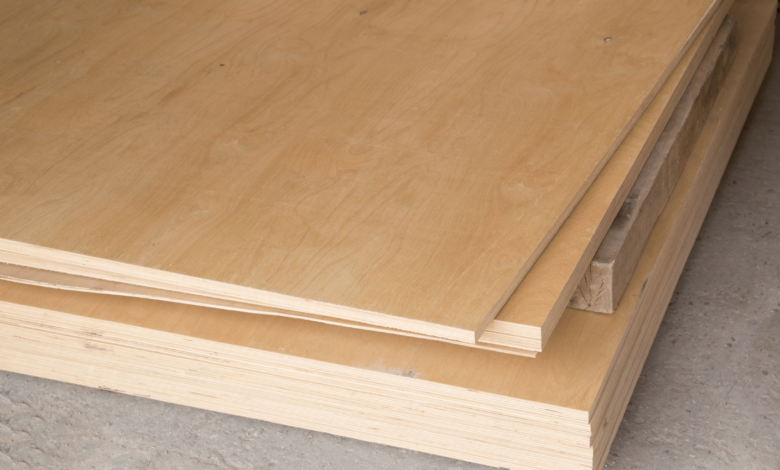Negotiating Gurjan Plywood and Calibrated Plywood Prices

When it comes to purchasing plywood, whether it’s for construction projects, furniture making, or any other application, making informed decisions is crucial. Two popular types of plywood often sought after in the market are Gurjan and calibrated plywood. Understanding how to negotiate prices for these plywood varieties can save you money while ensuring you get the quality you need.
Understanding the Plywood Types
Gurjan Plywood
Gurjan plywood is renowned for its durability and strength, making it a preferred choice for high-end furniture and construction projects.
It is made from the Gurjan tree, also known as Keruing, which is native to Southeast Asia. The wood’s natural resilience against moisture and pests makes Gurjan plywood highly sought after.
Gurjan plywood comes in various grades, with higher grades offering better aesthetics and structural integrity. Understanding the grading system and how it influences the it’s quality is essential before negotiating prices.
Calibrated Plywood
Calibrated plywood is engineered for precision and uniformity in thickness, making it ideal for applications where exact dimensions are critical.
It undergoes a specialized manufacturing process where each sheet is precisely calibrated to ensure consistent thickness throughout.
This type of plywood is often used in industries where accuracy is paramount, such as cabinetry, millwork, and architectural installations. Knowing the specific requirements of your project will help you determine if calibrated plywood is the right choice.
Tips for Negotiating Plywood Prices
Research Market Prices
Before entering negotiations, research the current Gurjan and calibrated plywood price in the market. Understand the factors that influence pricing, such as grade, thickness, and market demand.
Use online resources, contact multiple suppliers, and compare quotes to gauge the average price range. This information will empower you to negotiate from a position of knowledge and ensure you’re not overpaying for the plywood.
Additionally, consider factors such as shipping costs, taxes, and any applicable tariffs that may impact the final price. Being aware of these expenses allows you to negotiate more effectively and budget accordingly.
Evaluate Supplier Reputation and Quality
Assess the reputation and reliability of potential suppliers before engaging in negotiations. Look for suppliers with a track record of delivering high-quality plywood products and excellent customer service.
Request samples of Gurjan and calibrated plywood from prospective suppliers to evaluate their quality firsthand. Inspect the wood for imperfections, consistency in thickness, and overall structural integrity.
Choosing a reputable supplier ensures that you receive that it meets your expectations and project requirements. It also reduces the risk of encountering issues such as delays or substandard materials, which can disrupt your project timeline and budget.
Communicate Your Requirements Clearly
Specify Quantity and Specifications
Clearly communicate your plywood requirements, including the quantity needed and any specific specifications such as grade, thickness, and dimensions.
Providing detailed information upfront helps suppliers understand your needs and enables them to provide accurate quotes tailored to your project requirements.
Be flexible and open to discussing alternatives or adjustments to your specifications based on supplier recommendations. A collaborative approach to negotiations fosters a productive relationship and may lead to mutually beneficial outcomes.
Negotiate Terms and Conditions
In addition to negotiating prices, discuss terms and conditions such as payment terms, delivery schedules, and warranty policies.
Seek clarification on any contractual agreements or obligations to ensure there are no misunderstandings or discrepancies.
Consider negotiating bulk discounts or long-term contracts if you anticipate recurring plywood purchases. Establishing a mutually beneficial partnership with your supplier can result in preferential pricing and enhanced customer support.
Exploring Alternative Suppliers
Diversify Your Options
Don’t limit yourself to a single supplier when negotiating prices. Explore multiple options to compare prices, quality, and customer service offerings.
Reach out to local suppliers, distributors, and online retailers to expand your pool of potential suppliers.
Each supplier may offer unique advantages, such as faster delivery times, specialized products, or competitive pricing on specific grades. By diversifying your options, you increase your bargaining power and reduce the risk of dependency on a single supplier.
Consider Direct Plywood Purchases and Bulk Orders
Consider purchasing directly from manufacturers or mills to bypass intermediary markups and potentially secure lower prices.
Direct purchases allow you to establish direct communication channels with manufacturers, enabling you to negotiate prices and customize orders to suit your specific requirements.
Furthermore, explore the possibility of placing bulk orders or participating in group buying initiatives with other businesses or individuals in your industry. Bulk orders often qualify for volume discounts, enabling you to achieve significant cost savings over time.
Prioritizing Plywood Quality Over Cost
Invest in Long-Term Durability
While negotiating plywood prices, it’s essential to prioritize quality over cost savings in the long run. Opting for higher-quality, such as Gurjan or calibrated varieties, can result in superior durability and performance.
Consider the lifecycle costs associated with your plywood selection, including maintenance, repairs, and replacement expenses.
Investing in premium plywood upfront may incur higher initial costs but can yield significant savings over the it’s lifespan. High-quality product is less prone to warping, delamination, and structural failures, minimizing the need for costly repairs and replacements.
Factor in Project Requirements and Specifications:
Align your plywood selection with the specific requirements and performance standards of your project. Evaluate factors such as load-bearing capacity, moisture resistance, and environmental sustainability.
Consult with architects, engineers, or woodworking professionals to determine the most suitable plywood grade and specifications for your application.
In some cases, opting for lower-grade material to cut costs may compromise the integrity and longevity of your project. Balancing cost considerations with performance requirements ensures that you achieve optimal results without compromising on quality or safety.
Building Strong Supplier Relationships
Foster Open Communication and Trust
Cultivate strong relationships with your suppliers based on open communication, transparency, and mutual trust. Establishing a collaborative partnership fosters a conducive environment for effective negotiations and problem-solving.
Keep lines of communication open throughout the procurement process, from initial inquiries to post-delivery feedback and support.
Address any concerns or issues promptly and constructively to maintain a positive working relationship with your suppliers. Building trust and rapport can lead to preferential treatment, customized solutions, and ongoing support from your suppliers.
Conclusion
Negotiating calibrated plywood and Gurjan plywood price requires careful consideration of various factors, including market trends, supplier reputation, and project specifications.
By conducting thorough research, communicating clearly, and negotiating terms effectively, you can secure competitive prices without compromising on quality. Remember, informed decision-making is the key to successful plywood procurement and project execution.




